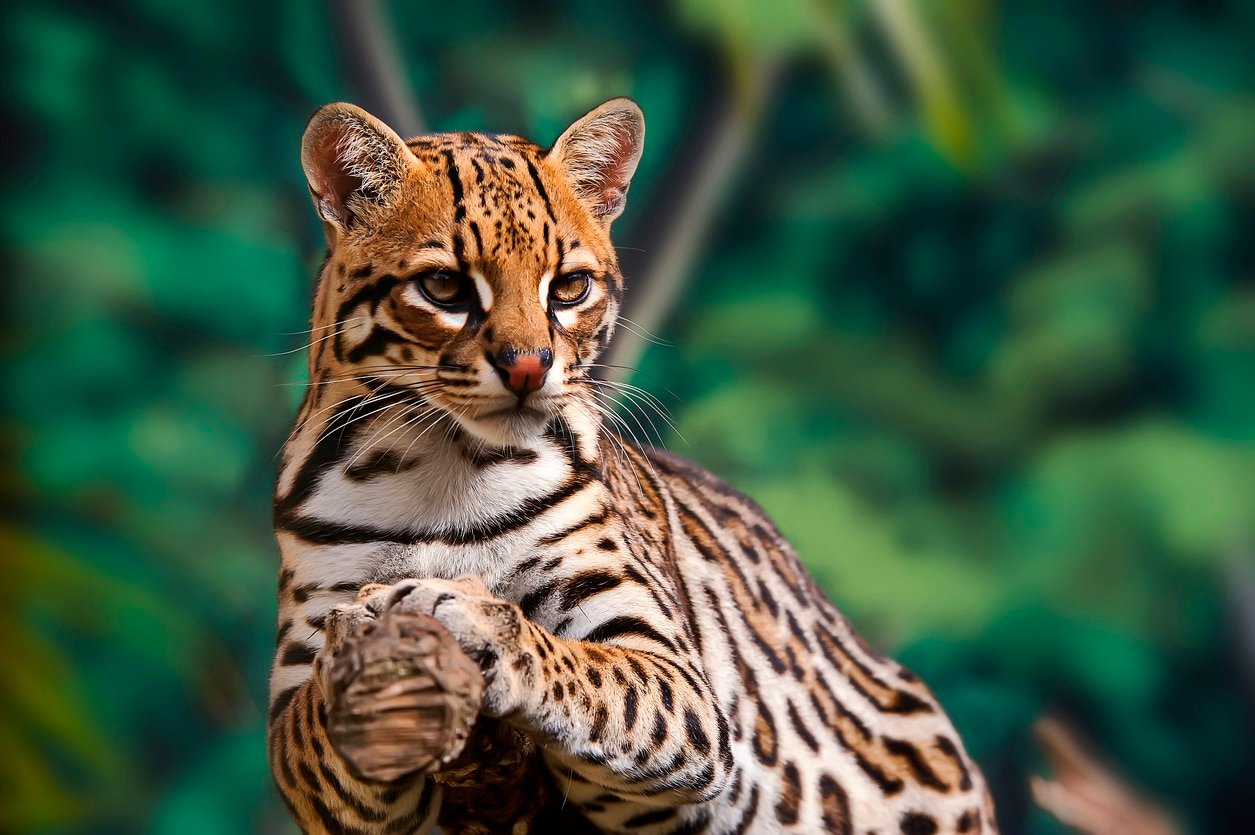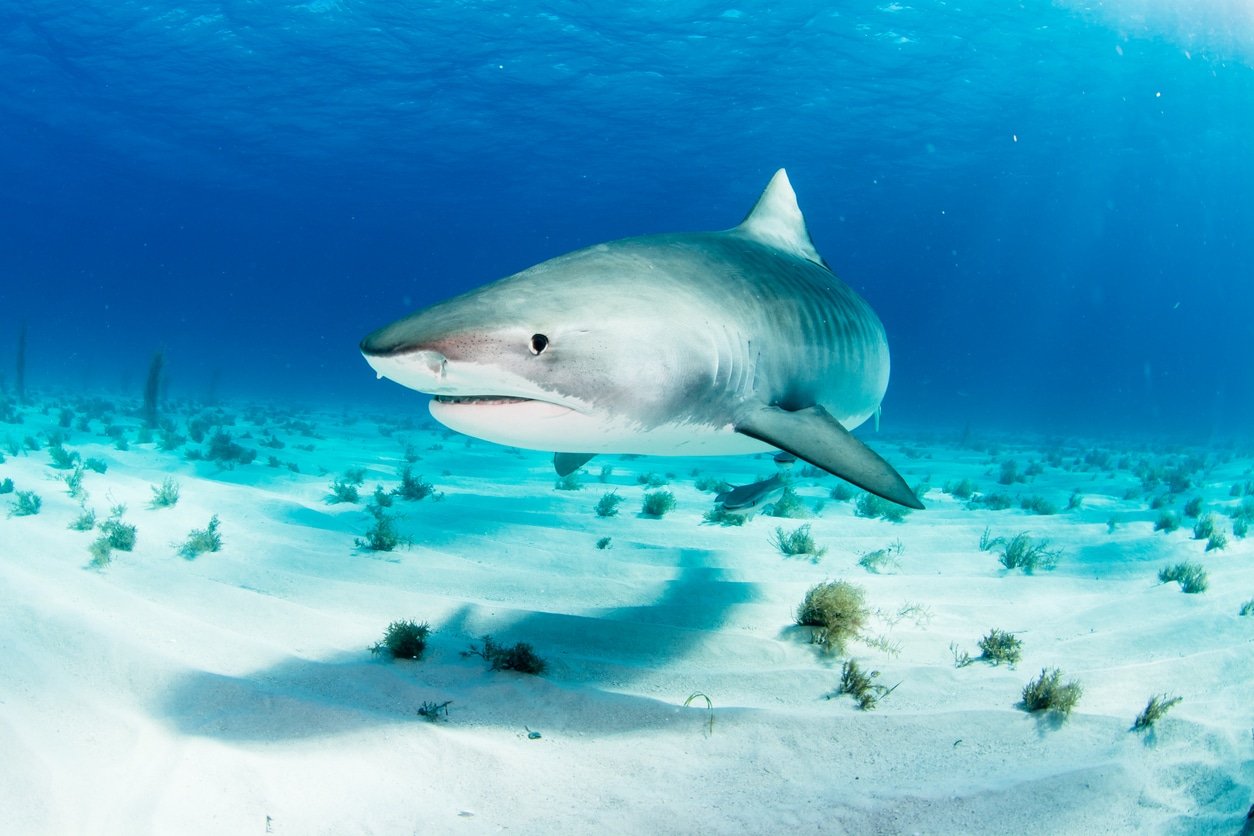Wildlife Wonders: The Common, Rare & Dangerous Animals in Cancun You Might Meet!
Cancun is an incredibly popular city in Mexico, bordering the Caribbean Sea and nestled into the Yucatan Peninsula. It’s famous for beaches, resorts, and incredible nightlife. But did you know that the wildlife of Cancun is also incomparable? From the animals you see each day to the ones that you should avoid, the city is full of breathtaking animals!
We know Cancun well, so here we divide up a few of the famous animals in Cancun into three categories: common, rare, and dangerous.
Keep reading to learn more about some of Cancun’s most famous and most elusive creatures, and where you can find them!

The Top Eight Common and Beautiful Animals to See in Cancun
First, let’s start with the more common animals. These animals are not endangered, and while they may not be on every street, you can certainly find them with relatively little effort.
That doesn’t mean these animals are ordinary – far from it! Here are 8 of the most common yet stunning animals to see in Cancun.
1. Manatees
First up on our list is the breathtaking manatee! These gentle giants float gracefully through the water and seeing them is truly a once-in-a-lifetime experience. They are not meant to be swam with like dolphins, but you can still view them with ease and it is certainly something everyone will remember.
The Boca Paila lagoon is known as a great place to see manatees surfacing for air, and Xcaret Park and Xel-Ha Park are available if you want to view them in a more controlled environment.
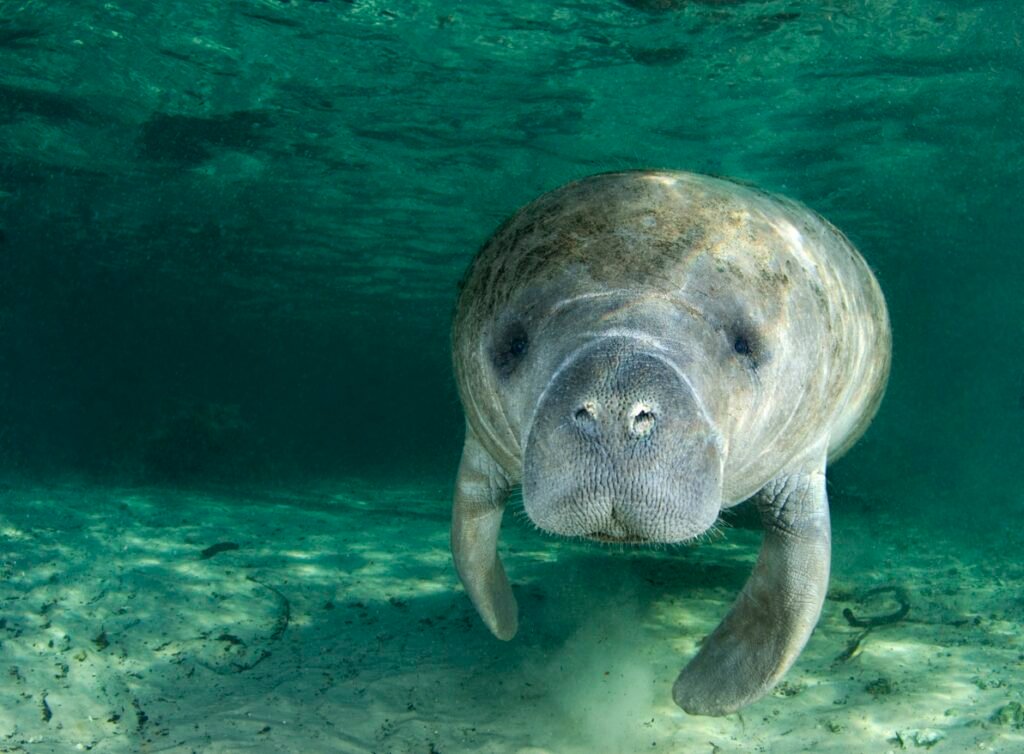
2. Spider Monkeys
These little creatures are iconic for getting up to mischief and being amazing acrobats, so don’t be surprised if one drops down in front of you! Spider monkeys are populous all over Mexico, and that includes Cancun. Some resorts might even have the opportunity to get your picture taken with a trained monkey on select days – that’s isa photo you’ll want to share around!
You can find many spider monkeys in the Punta Laguna Monkey Reserve, only a few hours away from Cancun which makes it the perfect location for a fun day trip!
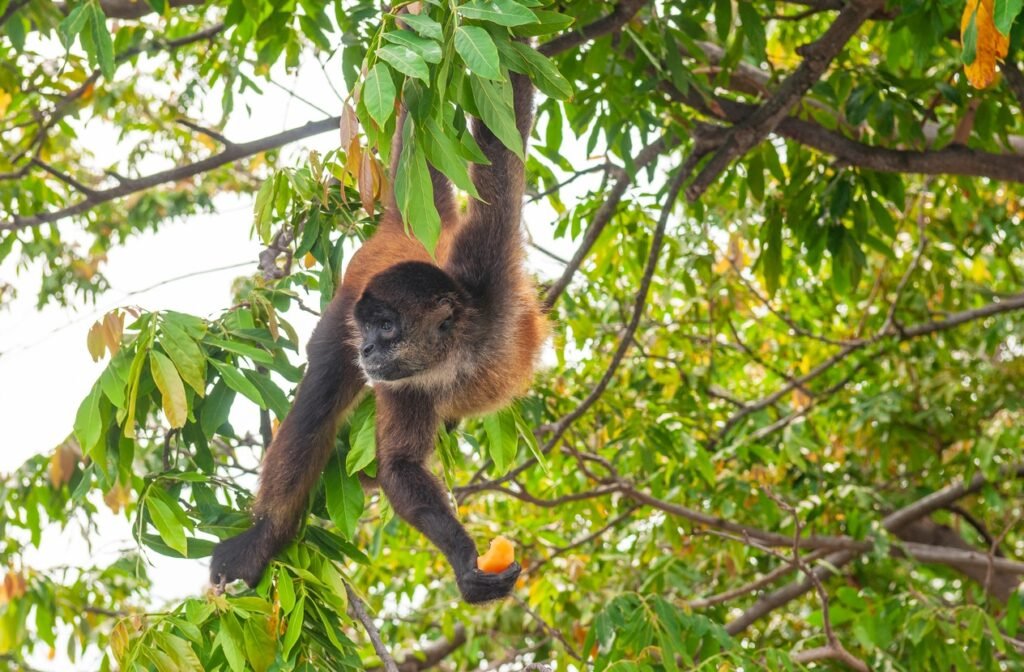
3. Sea Turtles
The two most common types of sea turtles in Cancun are Green Turtles and Loggerhead Turtles, and many adventure tours offer the chance to snorkel with them in the Caribbean Sea! These creatures are very gentle, making it easy to get close to them.
They also nest from June to August, so there is even a chance you could see eggs hatching along the sandy beaches!

4. Iguanas
These tropical natives are truly everywhere in Cancun! While they often hide away from humans during the busiest parts of the day. At resorts, it is not uncommon to see these large lizards sunning themselves or getting some shade in the more natural areas.
They are also more common in the morning, before most people have woken up. Just like spider monkeys, many resorts offer the chance to hold or take your picture with a trained iguana!
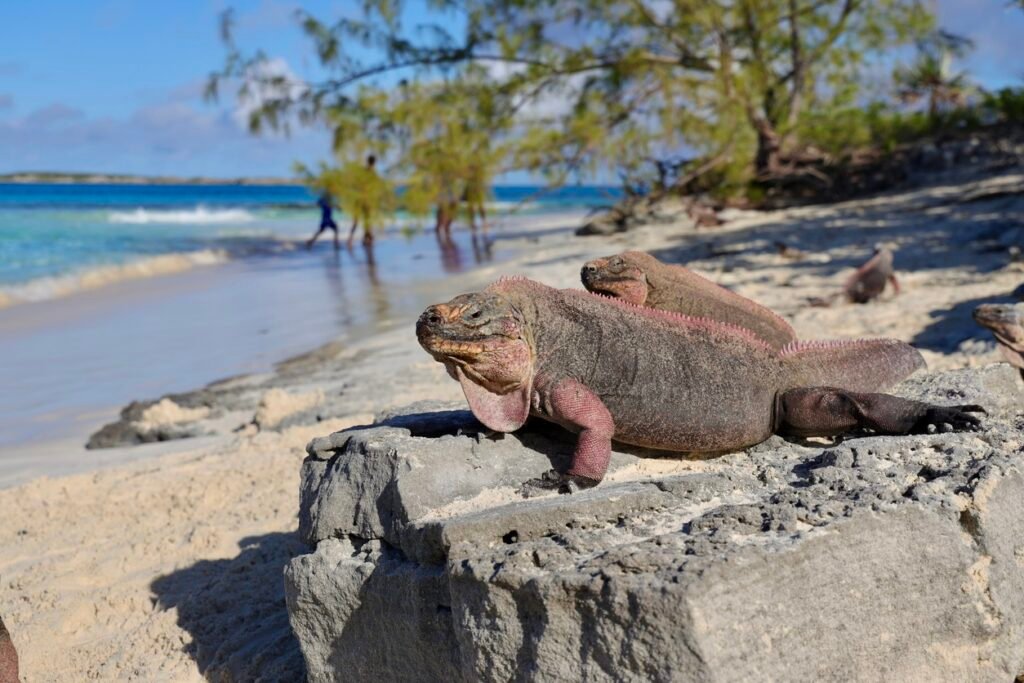
5. Great Blue Herons
Despite the name, these breathtaking birds are more white than blue! Their large size makes them stand out, and they can often be found along the coast searching for fish or stomping through the marshes that connect the sand and shore.
These animals are less receptive to human attention, but stopping and watching them for a bit reveals the beauty of nature around you! For bird watching enthusiasts, this will be a great animal for you.

6. Anteater, or Tamandua
The Tamandua is a small, four-toed anteater that populates the forest floors of Mexico, and Cancun is no exception! These mammals are well-known, thanks to their activity during both the day and night.
On a guided tour through Cancun’s forests, it is not uncommon to see one of these adorable animals slowly wandering around! They move quite slowly, but when they feel threatened they can move quickly. If you see one, quietly admire it!

7. Whale Sharks
Swimming with sharks is an activity that is not for the faint of heart. Swimming with whale sharks, on the other hand, is a piece of cake! These are the true “gentle giants” of the sea, as this huge shark prefers to simply graze along the seafloor and happily ignores humans.
You are most likely to see these gorgeous creatures between the months of June and September, particularly around the shores of places like Isla Holbox, Isla Mujeres, and Isla Contoy! (Recommended: Sharks in Cancun).
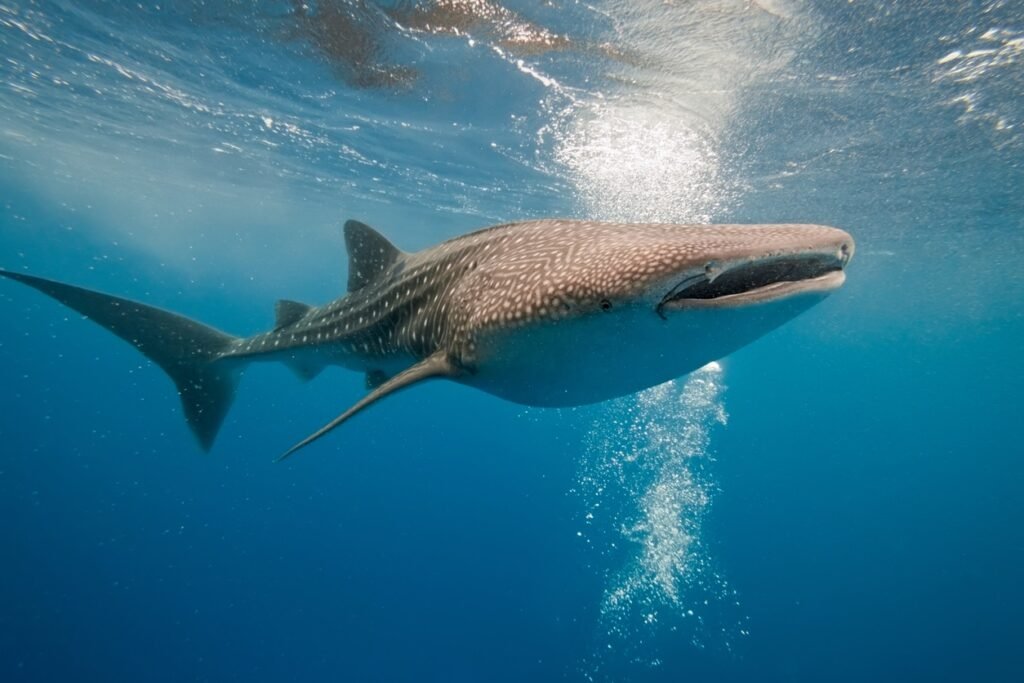
8. Barracuda
Finally, we have the fearsome barracuda! Despite common belief, the barracuda is not a shark, but rather a carnivorous scavenger fish. They may seem terrifying, but barracuda attacks or bites on humans are rare, especially in tourist hotspots.
Barracudas are more likely to follow around snorkelers or divers in the hopes of scavenging their next meal. You can see these fish offshore and on the submerged coral reefs of Cancun!
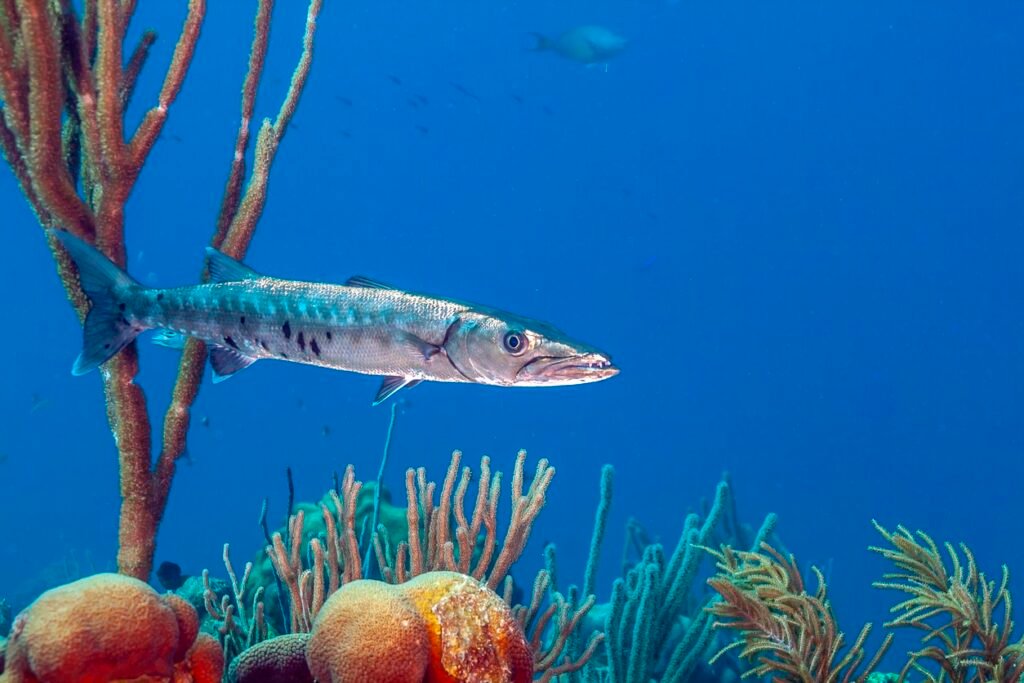
Top Six Rare Animals of Cancun
Before we begin, let’s clarify something. The term endemic means that an animal is native and only found in that location. Since Cancun is a city, animals are not endemic to Cancun specifically, but rather to the country of Mexico as a whole. But without a doubt, all of these Cancun animals below are still rare finds!
1. Tapirs
First up on our list is the stunning tapir. These animals are hoofed mammals with a stout body, long snout, and nocturnal habits. The tapir population of Central America extends up into Mexico, and includes one of only four species of tapir found worldwide. If you manage to see one, it is a rare sight indeed!
Xcaret Park near Cancun has a few tapirs to potentially see on tours. Trips through the Yucatan jungles could reveal them as well.

2. Coati
If you’ve never heard of a Coati before, don’t worry! These small mammals are similar in appearance to racoons, down to the ringed tail! Coatis are known for having long and flexible snouts, often nicknamed the “hog-nosed racoon”.
If you want to see these small and mischievous animals, look no further than the Xel Ha and Xcaret parks in Cancun. You just might see these rare creatures climbing through the trees!

3. Cacomixtle
This animal is often mistaken for a racoon or coati, mainly due to its brown coat and long ringed tail. The cacomixtle (also sometimes written as the cacomistle) is an endangered species that prefers mountain forest habitats and wet, tropical climates.
Tours through these areas will hopefully catch sight of one, but their dwindling numbers make that difficult. There is also a chance that certain sanctuaries near Cancun may have a cacomixtle in their care!
6. The Resplendent Quetzal
This rare bird is most commonly found in Central America, but it has been observed in southern Mexico as well. The quetzal is widely regarded as one of the most beautiful birds in the world, thanks to the wide array of colors it sports. Sadly, this species is threatened by habitat destruction and climate change.
If you see one in the forest around Cancun, you are the luckiest person around! While these birds have been observed in southern and southeastern Mexico (where Cancun is located), they are a rare find. Bird watchers, take note.

5. Melipona Bee
This animal might seem different from the rest of the ones on this list, but it is a very rare sight. Sadly, the Melipona bee is under threat due to destruction of habitat and overharvest. Colonies are not often found in the wild, but rather in the care of a sanctuary or professional.
The thing that makes Melipona bees so rare is that they are a species of stingless bees! If bee stings scare you, you don’t need to be concerned here. In addition, Melipona honey is often considered to be a delicacy and has drawn the attention of many international chefs. A chance to taste some shouldn’t be wasted! (Recommended: Bugs and Insects in Cancun).
6. Ocelot
The ocelot is a type of big cat, known for its spotted coat and large eyes. As a medium sized species, they are not as easily visible as, say, a jaguar. Despite the size, an ocelot is a breathtaking sight. Unfortunately, this species is endangered.
They dwell most often in tropical and subtropical rainforests, though they have also been known to appear in partially cleared forests or woodlands. A small group of ocelots has been spotted in the jungles north of Cancun too, so guided wildlife tours have a better than average chance of spotting one. However, “better than average” is still rare when dealing with an endangered and elusive species like the ocelot.

With that, we conclude our list of the top six most rare animals to spot in Cancun! Keep your eyes peeled, and with any luck you might just catch a glimpse of something on this list! Before we wrap up, you should also keep an eye out for the animals you should avoid.
Five Dangerous Animals in Cancun
Unfortunately, some beautiful animals can in fact hurt you too. You should only see the following animals on guided and protected tours, or in sanctuaries and preserves where they are safely guarded.
The animals below are venomous or poisonous, so they can present a real danger to humans. These animals should not be feared, but they should certainly be respected and avoided when possible.
1. Coral snakes
First up is a common dangerous reptile: the coral snake. Coral snakes are all over the world and available in many subspecies, but one thing they all have in common is the fact that they are highly venomous. Luckily, these snakes are brightly colored as a warning to stay away! If you see a coral snake, do not provoke it and move away slowly.
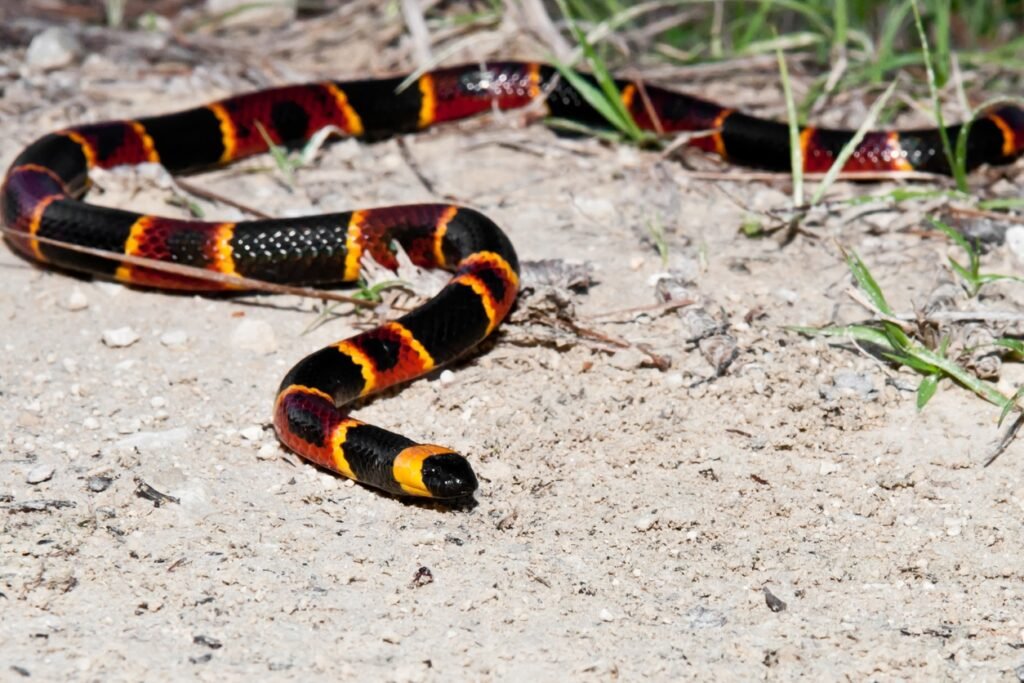
2. Boa Constrictors
These snakes are not venomous, but are famous for their ability to crush their prey. While Cancun is not a hotspot for boas due to its highly urban and industrialized center, these huge snakes have been spotted in jungles and forests all around Mexico. However, they rarely attack humans unless provoked. In addition, their huge size makes them easy to avoid! (Recommended: Snakes in Mexico – What You Need to Know).
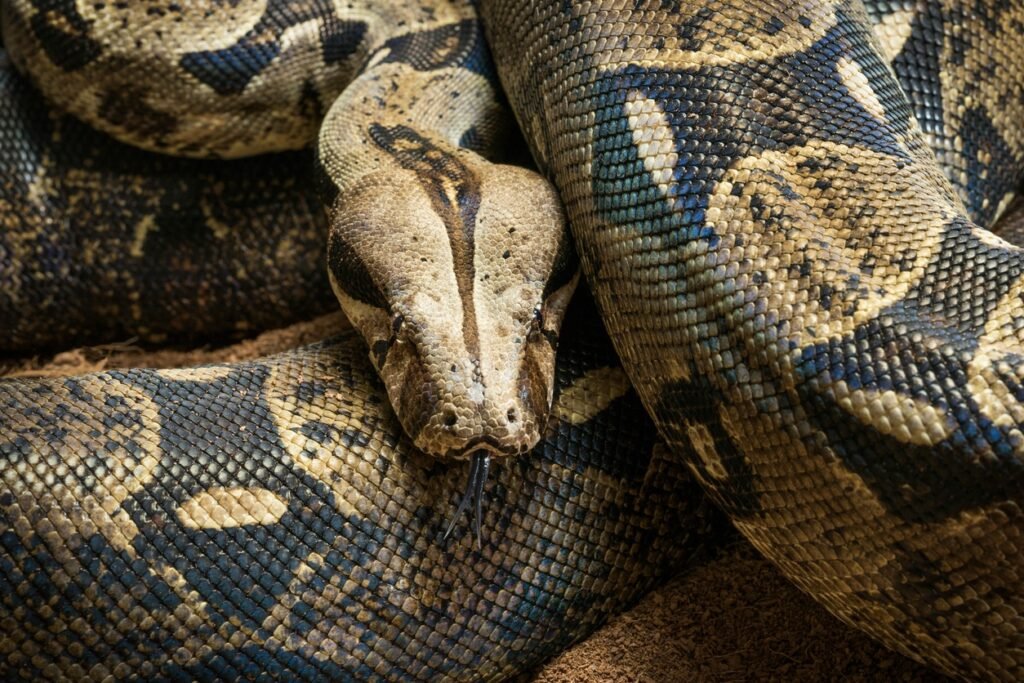
3. Mexican Green Rattler
The Mexican Green Rattler, also known as a rattlesnake or pit viper, is a type of highly venomous snake that can be found throughout Mexico – including Cancun. As with most snakes, they are driven away from resorts and beaches and are more common in jungle areas. Stay on guided tours with professionals, and avoid traveling into unfamiliar wilderness and you shouldn’t bump into a Mexican Green Rattler!
4. Mexican Beaded Lizard
The Mexican Beaded Lizard is a species of venomous lizard native to Mexico. Their bites can be incredibly painful, but they do not threaten humans unless provoked or in danger. They are most commonly found in desert areas. As with most dangerous animals in Cancun, they are monitored and kept away from cities whenever possible.
5. Box Jellyfish
Jellyfish sightings are rare near Cancun, and this includes any sightings of the highly dangerous box jellyfish. However, it is still important to be careful and check areas where you swim, especially when quite far from the shore.
Stings from these animals can be extremely painful, and may even be fatal so if stung seek medical attention immediately.
As a final word, you do not need to worry about dangerous animals in Cancun – as a highly trafficked area, officials and staff work incredibly hard to keep such animals far away from resorts. So while it is important to be aware, you are unlikely to come face-to-face with anything on this list!
Go Appreciate the Wildlife of Cancun!
As we’ve shown, Cancun is a bustling city filled with opportunities. Amongst these opportunities is the chance to see some of the most beautiful and rare animals you will ever encounter.
From the common iguana to the rare quetzal, Cancun is an animal lover’s paradise. Tours and professional guides are available, so don’t hesitate to plan your introduction to Cancun’s wildlife as soon as possible!


